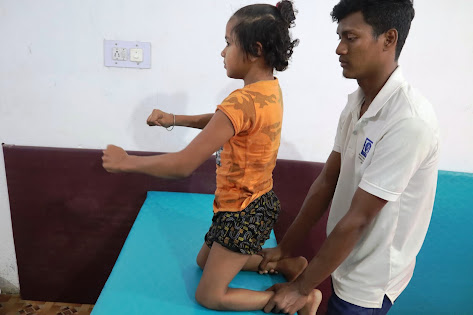MIXED CEREBRAL PALSY THERAPY PATTERNS
THERAPEUTIC INTERVENTION
FOR
"MIXED CEREBRAL PALSY"
1. Therapy Program for Mixed Cerebral Palsy
The goal for mixed type cerebral palsy treatment is to identify the muscle tone and act upon it according to the problems identified and develops the methods to act upon according to the therapy plan and requirements. Treatment can vary for each child depending on their symptoms, and some children will require several forms of treatment.
Here the therapists create a care plan with treatment options designed to help manage cerebral palsy symptoms. Therapeutic intervention includes Physiotherapist, and Occupational Therapist to works on coordinated manner to bridge necessary therapy requirements as the severity and the depth of problems identified. Mobility aids and assistive devices are also forms of treatment to help children with cerebral palsy move independently and communicate more effectively
This type of therapy aims to improve a child’s movement, muscle strength, motor skills, and balance. While the therapy will vary depending on the specific problems, therapy activities will usually include strength training and flexibility exercises.
Occupational therapist plays a very important role in providing therapy that teaches how to be more independent through the activity of daily living trainings.
2. Therapy pattern for Mixed cerebral palsy
a. Ball therapy for upper limb straightening and neck control and trunk strengthening and releasing lower limb tightness
b. Supine to sitting therapy on bolster for core strengthening and trunk stability
c. Bridging therapy for Trunk flexibility and strengthening
d. Sitting to standing balance therapy
e. Gait training thorough walking stick
f. Sitting to standing balance with bolster
g. Parallel bar walking for gait training
3. Conclusion
Cerebral Palsy is a diverse group characterized by delayed body function, disorders and neurological that is non-progressive. Although the clinical picture may change as the brain matures. There is a need to know the associated signs and symptoms. Diagnosis and thorough testing is needed to know the exact problem in a child affected by cerebral palsy.
Cerebral palsy children require a complex health care team for identification, assessment, therapy intervention and follow-up with these children that gives them the best quality of life they can have.
Early physiotherapy and occupational therapy interventions provide an opportunity for the child to practice functional activities, body positions and develop proper gait pattern. By practicing meaningful and effective skills in a variety of environments, the child will have the opportunity to acquire skills that encourage them to be more independent with the activity of daily living and to increase their level of participation in society.
Therefore, effective therapy plan for children with cerebral palsy focuses on promoting functional independence and preventing further muscle weakness by applying needful exercises according the condition.








